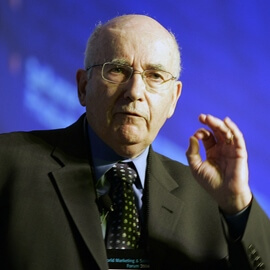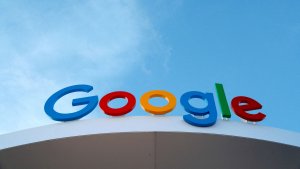Co-author of Marketing 4.0: Moving from Traditional to Digital
View Author ProfileConnected audiences have changed the essential foundations of marketing. Business strategies must adapt.
Opinions
Marketing 4.0: Reaching Connected Customers
Connected audiences have changed the essential foundations of marketing. Business strategies must adapt.

We have always believed that the word marketing should be written as market-ing. Writing it that way reminds us that marketing is about dealing with the ever-changing market, and that to understand cutting-edge marketing, we should understand how the market has been evolving in recent years.
The clues and trends are there for us to see. A new breed of customer, the one that will be the majority in the near future, is emerging globally—young, urban, middle-class with strong mobility and connectivity. While the mature markets are dealing with an aging population, the emerging market is enjoying the demographic dividend of a younger, more productive population.
They are not only young, they are also rapidly migrating to urban areas and embracing a big-city lifestyle. The majority of them are in the middle class or above and thus have a sizable income to spend.
Moving up from a lower socioeconomic status, they aspire to accomplish greater goals, experience finer things, and emulate behaviours of people in higher classes. These traits make them a compelling market for marketers to pursue.
But what distinguishes this new type of customer from other markets we have seen before is their tendency to be mobile. They move around a lot, often commute, and live life at a faster pace. Everything should be instant and time-efficient. When they are interested in things they see on television, they search for them on their mobile devices.
When they are deciding whether to buy something in-store, they research price and quality online. Being digital natives, they can make purchase decisions anywhere and anytime, involving a wide range of devices. Despite their internet savvy, they love to experience things physically.
They value high-touch engagement when interacting with brands. They are also very social; they communicate with and trust one another. In fact, they trust their network of friends and family more than they trust corporations and brands. In short, they are highly connected.
Breaking the Myths of Connectivity
Connectivity is arguably the most important game changer in the history of marketing. Granted, it can no longer be considered a new buzzword, but it has been changing many facets of marketing and is not showing signs of slowing down.
Connectivity has made us question many mainstream theories and major assumptions that we have learned about customer, product, and brand management. Connectivity significantly reduces the costs of interaction among companies, employees, channel partners, customers, and other relevant parties.
This in turn lowers the barriers to entering new markets, enables concurrent product development, and shortens the time frame for brand building.
There have been various cases of how connectivity quickly disrupted long-established industries with seemingly high entry barriers. Amazon has disrupted the brick-and-mortar bookstores and later the publishing industry.
Likewise, Netflix has disturbed the brick-and-mortar video rental stores and, along with the likes of Hulu, has shaken up the satellite and cable TV services. In a similar fashion, Spotify and Apple Music have changed the way music distribution works.
Connectivity also changes the way we see the competition and customers. Today, collaboration with the competitors and co-creation with customers are central.
Competition is no longer a zero-sum game. Customers are no longer the passive receivers of a company’s segmentation, targeting, and positioning moves. Connectivity accelerates market dynamics to the point where it is virtually impossible for a company to stand alone and rely on internal resources to win. A company must face the reality that to win it must collaborate with external parties and even involve customer participation.
The success of Procter and Gamble’s (P&G’s) Connect + Develop program exemplifies this. Instead of protecting the brand equity of Febreze as its own competitive advantage, P&G licenses the trademark for new categories. Partner companies such as Kaz and Bissell launched Honeywell scented fans and odor-removing vacuum bag filters that carry the Febreze brand.
Despite the obvious influence, connectivity is often underrated as a mere application of technology that marketers need to deal with. Seeing connectivity from a technological viewpoint alone would often be misleading. In the context of strategy, many marketers view connectivity simply as an enabling platform and infrastructure that support the overall direction.
A bigger-picture view of connectivity allows marketers to avoid this trap. While it is true that connectivity has been driven by technology—namely “screen technology and the internet”—its importance is far more strategic.
A survey by Google reveals that 90 percent of our interactions with media are now facilitated by screens: smartphone, tablet, laptop, and television screens. Screens are becoming so important in our lives that we spend more than four hours of our leisure time daily to use multiple screens sequentially and simultaneously.
And behind these screen-based interactions, the internet has been the backbone. Global internet traffic has grown by a factor of 30 from 2000 to 2014, connecting four out of ten people in the world. According to a Cisco forecast, we will see another ten-fold jump of global internet traffic by 2019, powered by more than 11 billion connected mobile devices.
With such a massive reach, connectivity transforms the way customers behave. When shopping in-store, most customers would search for price comparison and product reviews. Google research shows that eight out of ten smartphone users in the United States do mobile research in-store.
Even when watching television advertising, more than half of the TV audience in Indonesia conducts mobile search. This is a trend affecting customers globally.
Derivative products of the internet also enable transparency. Social media such as Twitter and Instagram enable customers to show and share their customer experience, which further inspires other customers from the same or a lower class to emulate and pursue a similar experience.
Communal rating sites such as TripAdvisor and Yelp empower customers to make informed choices based on the wisdom of the crowd.
Thus, to fully embrace connectivity we need to view it holistically. While mobile connectivity—through mobile devices—is important, it is the most basic level of connectivity, in which the internet serves only as a communications infrastructure.
The next level is experiential connectivity, in which the internet is used to deliver a superior customer experience in touchpoints between customers and brands. In this stage, we are no longer concerned only about the width but also about the depth of the connectivity. The ultimate level is social connectivity, which is about the strength of connection in communities of customers.
Since connectivity is closely related to the youth segment, it is also often considered relevant only for the younger generation of customers. As a result, many marketers implement “connected” marketing as a separate youth strategy without fully understanding how it fits with the overall marketing strategy.
It is true that being digital natives, younger customers are the first to adopt connectivity, but they inspire their seniors to adopt connectivity as well. Moreover, as the world population ages over time, digital natives will become the majority and connectivity eventually will become the new normal.
The importance of connectivity will transcend technology and demographic segment. Connectivity changes the key foundation of marketing: the market itself.
This is an edited extract from Marketing 4.0: Moving from Traditional to Digital by Philip Kotler, Hermawan Kartajaya and Iwan Setiawan (published by Wiley, 2017).
PHILIP KOTLER is the S.C. Johnson & Son Distinguished Professor of International Marketing at the Kellogg School of Management at Northwestern University. He is author of more than fifty books, including the globally popular Marketing Management, now in its fifteenth edition.
HERMAWAN KARTAJAYA is the founder of MarkPlus, Inc., the largest marketing consulting firm in Indonesia.
IWAN SETIAWAN is COO of MarkPlus, Inc.
Most read in Opinions
Trending articles on Opinions
Top articles on Minutehack
Thanks for signing up to Minutehack alerts.
Brilliant editorials heading your way soon.
Okay, Thanks!




